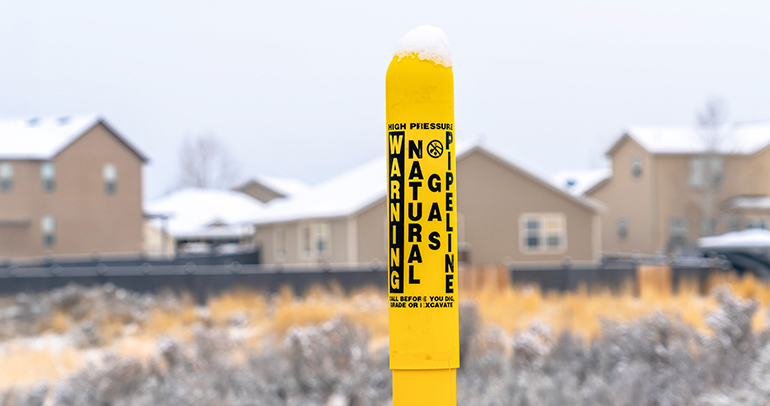
The energy utility sector is a unique part of the US economy. Since Samuel Insull crafted a bargain in which utilities were granted monopolies in exchange for a regulatory structure designed to promote operational efficiency and service improvement like that seen in competitive industries, most Americans have been served by monopoly utilities.
One perhaps unexpected side effect of this is that, unlike most industries Escalent works with, utilities are very open to sharing with and learning from each other. With utility chief customer officers seeking to create a best-in-class experience for their customers, most utilities use some sort of customer experience benchmarking study to determine industry leaders in customer satisfaction and engagement.
Since 2014, Escalent has offered its Cogent Syndicated Utility Trusted Brand & Customer Engagement (UTBCE): Residential and Business benchmarking studies. I’m not writing this to pitch you on our research; instead, from a decade of experience with the utility industry on benchmarking research and performance measurement, I want to share some key considerations for selecting a benchmarking study, whether it’s ours or one of our competitors.
1. Who Is Surveyed? The Importance of a Demographically Representative Sample of Utility Customers
Unlike other industries, energy utilities have an obligation to serve every customer in their territory. Thus, if you’re seeking to measure your customers’ experience, the best practice is to return to the research fundamental of a demographically representative sample. In our residential Cogent Syndicated UTBCE study, for instance, we quota respondents based on age, race, and household income for each individual utility, ensuring accurate customer representation and a statistically valid benchmarking dataset for every utility we cover.
If you’re comparing benchmarking studies, ask about the demographics of the sample and compare that to what you know about your customers from the census. Ensure the study aligns with census data and known customer profiles to obtain reliable and actionable insights.
2. How Are Scores Determined? Exploring the Nuances of Scoring Methodologies
Most benchmarking surveys use calculated performance scores (often referred to as benchmarking indices), but the modeling often looks very different between studies. While benchmarking research is useful to identify top-performing utilities that are delivering an exceptional customer experience, we believe that the ultimate arbiter of each utility’s customer experience success is that utility’s customers. Thus, models that account for differences between geographic regions and service types (e.g., natural gas vs. electric) offer more actionable insights than one-size-fits-all national models.
After all, we know that Californians and New Yorkers are a world apart in attitudes and experiences. Why would you measure customer sentiment on the same model for both?
Ask the study provider for details on its model and be wary of studies that have a “black box” scoring methodology. For a study to be useful, you should understand how customer perceptions interact and ultimately build up to the modeled scores.
3. Are the Data Comparable Across Time?
Because we believe that each utility’s customers are ultimately who decide whether a company is successful in its customer experience goals or not, it’s important to be able to compare your utility’s results over time. Benchmarking studies that have a methodological “break”—whether it’s their sampling techniques, survey questions or scoring model—have limited usefulness for trend analysis, at least until they build up a solid history.
4. How Actionable Are the Data You’ll Receive? Ensuring You Get Useful Customer Insights from Utility Performance Benchmarking Studies
Customer perceptions make up the core of most benchmarking studies. Are customers satisfied with their experience with the utility? How do they view the utility’s brand reputation and service quality? While these insights are valuable, it naturally leads customer experience leaders to ask how they can influence these customer perceptions. We address this in our Cogent Syndicated Utility Trusted Brand & Customer Engagement studies by providing more than 100 diagnostic questions that help utility leaders understand the factors (e.g., specific service experiences, customer communications, product/service use) that shape customer perceptions.
If you’re comparing benchmarking studies, ensure you understand how the study allows you to connect customer perceptions to the strategies and tactics you employ at your utility. This will help ensure you receive actionable data and insights you can use to improve customer sentiment, satisfaction and engagement.
5. How Useful Is Cross-Sector Benchmarking for Utilities? Understanding Its Limitations and Opportunities
As one of my colleagues in our Energy practice said, “cross-sector benchmarking for utilities is like comparing apples to motor oil.” The main reason behind this is the obligation to serve: unlike banks or telecom companies that can “choose” their customers by segmenting the market and targeting certain customer groups, utilities must serve everyone.
That said, we believe cross-industry benchmarking is a great way to bring fresh thinking to bear, so a company like Escalent with deep domain expertise across industries can help identify and implement proven solutions found in other industries to better meet the challenges of the utility sector.
One other note on cross-sector benchmarking: while we measure Net Promoter Score (NPS) in our studies because some of our clients are interested in it, we don’t think NPS is useful in the utility context. For starters, most utility customers don’t have the ability to choose their utility, so the framing of the question of how likely they would be to recommend the utility to others strikes many respondents as non-sensical. For more, please see my colleague’s blog on how utilities should pick key performance indicators.
6. One More Thing…
While I said I wasn’t here to pitch our Cogent benchmarking studies, I will pitch a key differentiator: our Cogent subscribers can tout their performance without any additional fees or paperwork.
With our team’s decades of experience in energy industry research and utility customer insights, we believe the utilities that will be most successful in the future are those that have built strong brands and customer relationships. We recognize top-performing utilities throughout the year based on their scoring in the study. Utilities that perform well should be able to share that success with their customers, regulators, and investors—and we actively encourage and support this!
If you’re interested in learning more about our perspective on utility benchmarking research or our Cogent Syndicated studies, fill out the form below. We’d love to hear from you!
Want to learn more? Let’s connect.








